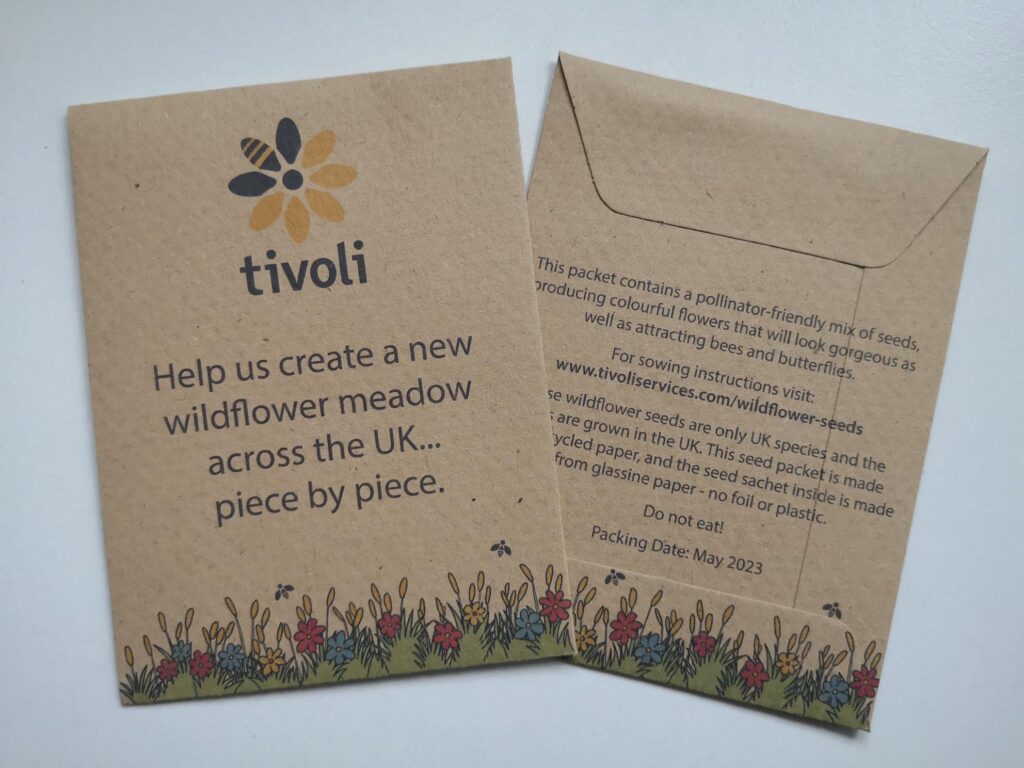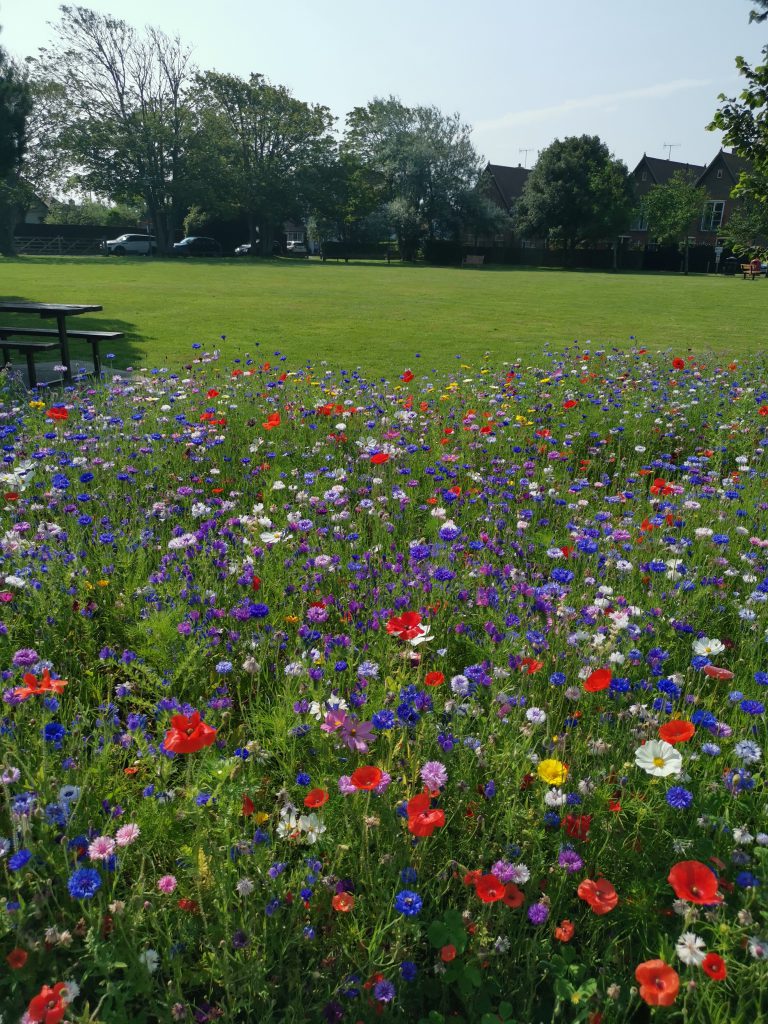Our seed packets contains a mix of some or all of the following wildflowers: Yarrow, Lesser Knapweed, Wild Carrot, Ladies Bedstraw, Rough Hawkbit, Ox-eye Daisy, Ribwort Plantain, Cowslip, Selfheal, Meadow Buttercup, Yellow Rattle, Sorrel, Salad Burnet, White Campion and Red Campion, and some meadow grass seeds that are perfect for butterflies, bees and other insects.
Perennial mix – this mix should come back year after year and is a low maintenance option if you choose not to switch your wildflower patch or container each year.
Step 1 – You can sow your seeds either in spring or autumn. Make sure the soil is not too wet or dry and don’t add any topsoil or extra compost, as native wildflowers do well on low nutrient soil.
Step 2 – Find a bare patch of soil in a sunny spot. The area needs to be grass
free, as grass grows quickly and strongly and can stop the wildflowers from growing. You don’t want any competition for the wildflowers!
Step 3 – Mix your wildflower seeds with something like dry, fine sand in a container if you can, this helps you spread it more evenly on the ground. Sprinkle the seeds by hand evenly over the surface.
Step 4 – Press the seeds gently into the soil, but try not to cover them too much as seeds need light to germinate.
Step 5 – Carefully water the area using a watering can, and keep watering as required until established.
Step 6 – During late summer, cut down to a few centimetres.


